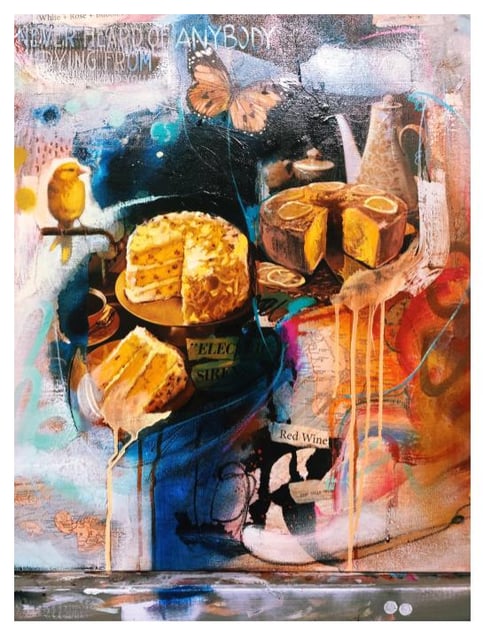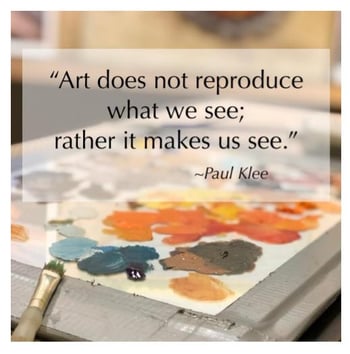
Photo caption: Artists who use symbols in their art can create layer upon layer of meaning in their work. Photo courtesy of the Milan Art Institute.
Symbol (ˈsim-bəl): Something that stands for or suggests something else by reason of relationship, association, convention, or accidental resemblance. ~Merriam-Webster
It’s the lion as it roars with courage. The deep, velvety red rose so passionate in love. The sweet, pure white dove of peace. The stunning, red fox that cocks its head to look at you with cunning, clever eyes.
Can you see them? Can you feel what they represent? No one has to say a word to understand if you’ve seen a painting with the imagery described in the sentences above.
So what is a symbol in art? Why bother with it anyway? What difference can it make in your art and essentially, your career? Let’s dig a little deeper.
(Did you get the symbolism there?)
What is Symbolism in Art?
Merriam-Webster said it. It’s something that represents something else. Symbols usually represent a characteristic. It gives legs, actually, life, to the intangible so we can see it.
In the symbols mentioned above, there’s a lion. Picture it— standing tall and proud with a full mane, head leaning back and mouth wide open, teeth bared. You can almost hear that mighty roar. You can see and feel the strength of its sinewy legs and back.
It’s easy to see how a lion can be a symbol for courage, strength, leadership and royalty. You don’t need to have someone point them out if you’re looking at a painting of one. It’s just there and it grabs the viewer so that they not only see it, they also feel it...and they stand taller, more courageous themselves.
What Difference Does it Make?
The difference comes from the reaction of the viewer. They not only see a beautiful work of art, they feel it as well. The colors, brush strokes, composition all point to that one symbol, the message you want to say.
By engaging the viewer, it elevates and enriches your art. The German artist Paul Klee says, “Art does not reproduce what we see; rather it makes us see.”
The viewer doesn’t just see the lion. You know, fur, sharp teeth, ginormous paws. They see courage. They see the regalness. They see the leader.
When you paint with symbols, you take the viewer into another realm, the spiritual realm. They feel it deeply within their souls. You can portray love, joy, peace, loyalty, renewal, life—all things beautiful and kind. You change the mindset of the viewer. You change the world.

How Do You Create Your Own Symbols in Art?
You start by understanding symbols, what they are and how they work. Use your paint colors, brush strokes, marks, and composition to work together to convey your symbol.
It’s not just an individual symbol plopped onto your canvas. It’s that symbol worked into the colors you choose, the underpainting and markings you make, the brush strokes throughout. They all work together holistically to convey your message.
That’s really what you’re doing—you’re the storyteller, the visual storyteller. Symbols in the written or spoken word are told. In art, they are shown.
You don’t have to use standard or common symbols. Create your own. Make them work to show your message so your viewer hears (sees) your voice.
Final Thoughts on Symbols in Art
Learning to use symbols in art can be a bit of an exercise in balance. You need to dig deep while not getting so profound that it’s lost in translation.
Our symbols should serve as to enrich the work, not make it feel so overly profound that it’s not accessible to the viewer.
So, in other words, be authentic! Use your voice while conveying your message.
This is just the tip of the iceberg of what you’ll gain from joining our Milan Art Community! It’s an online interactive community of artists from around the world who share information, inspiration, and...art! Check it out!
Read More to Learn How to Create More Meaningful Art
Becoming a Professional Artist: 11 Tips for Getting Your Art Into Galleries
3 Revolutionary Steps to Create Atmosphere in Your Paintings
3 Ways That Tech Makes Online Art Ed Better Than In-Person Classes (In Many Cases…)
